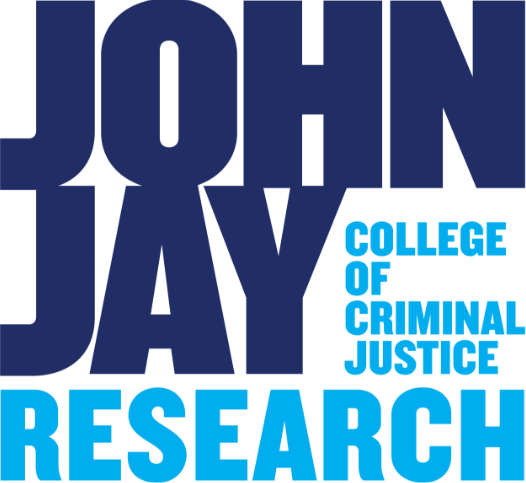A Sea Change in Forensic Science
Finding Evidence
Researchers: Marta Concheiro-Guisan, Mechthild Prinz, Chelsea Binns, Sarah Chu
Author: Judy Gelman Myers
In a court of law, jurors are expected to base their verdict on hard evidence rather than hearsay or opinion. But that hasn’t always been the case. Advances in science and technology, as well as high-level government intervention, have altered the mechanics of forensic science, its role in the criminal justice system, and the skills investigators need to collect hard evidence.
FORENSIC TOXICOLOGY
Forensic toxicologists analyze tissue samples and body fluids to detect, identify, and measure foreign substances in a body, whether alive or dead. According to Dr. Marta Concheiro-Guisan, Assistant Professor of Forensic Toxicology, among the biggest problems in analytical toxicology today is keeping pace with the explosion of novel psychoactive substances (NPS), which emerge almost weekly. When asked to verify the presence of a particular drug in order to assess a person’s cause of death, criminal liability, or health outcome, forensic toxicologists easily recognize familiar substances like morphine based on previous analyses. However, drugs like new derivatives of fentanyl present unfamiliar chemical compounds, sometimes in low concentrations, making them more difficult to analyze.
Fortunately, technology is also evolving very fast, so it’s “kind of a race” between the new drugs and the technology used to identify them, says Concheiro-Guisan. The most sophisticated instrumentation in use today—liquid chromatography combined with high-resolution mass spectrometry—identifies the individual components in a sample, then analyzes their molecular weight down to four decimal places, determining their molecular makeup with extremely high specificity.
Once a drug has been identified, the question turns from, What drug was it? to, When was it ingested? Biological samples, called matrices, provide answers to this question and others asked in legal and clinical settings.
Different matrices serve different purposes. Blood indicates what substances are present at the time the sample is taken, while hair indicates what happened a month or two months earlier; when drugs are ingested, they enter the hair and remain as it grows, at about a centimeter per month. Explains Concheiro-Guisan, “Imagine a custody case, where one parent accuses the other of being an alcoholic. You run a urine or blood test and it comes up negative, showing that person did not drink that day. Then you take the hair and do segmental analysis and say, ‘I found this ethanol metabolite with concentration above a certain level, so I know this person is a chronic alcohol user.’”
Toxicologists also use urine when searching for the presence of drugs. While studying community drug use in the five boroughs, Concheiro-Guisan collected raw sewage from wastewater treatment plants throughout the city. Raw sewage contains a lot of urine, making it a good indicator of what drugs have been used—and expelled—by a community. She says this is a quicker and more objective way of finding out what’s going on in a neighborhood than traditional methods, such as asking people to fill out surveys, tracking emergency room visits, or monitoring drug rehab programs.
FORENSIC BIOLOGY
Every time you don a coat, write a letter, or load a gun, you leave a biological trace of yourself behind. Often a forensic biologist can use a trace to identify the perpetrator of a crime, but sometimes there’s simply not enough material to work with. Dr. Mechthild Prinz, Associate Professor and forensic molecular biologist, researches how to squeeze the most information out of every flake of skin or drop of sweat.
Tracing DNA left behind after contact is a challenge in forensic biology. The most straightforward way of getting the best results is to retrieve the most DNA, but that’s not always easy. Take, for example, a ransom note—the challenge is lifting the author’s skin flakes off the paper while leaving the fingerprints intact. Prinz and John Jay student Patrick McLaughlin created a device that connects a vacuum to a glass column with a hose to suck the skin flakes off the paper without pressing down on it and smearing the fingerprint.
In some cases, there may simply not be enough DNA in a sample to recover by any means. In those cases, Prinz suggests reintroducing a technique that was replaced by DNA testing in 1985: protein analysis, which can be used to identify what types of body fluid are present in a crime scene sample, or to identify one person from another.
Semenogelin, a protein in semen, is a biological marker not found in other bodily fluids. When it is present in a sample, the forensic biologist knows she has discovered the presence of semen. Prinz is not the only scientist working on protein analysis, but she has advanced the technique by showing that it can be done on a relatively inexpensive machine. “No crime lab will actually do this test if they have to buy an $800,000 machine,” says Prinz. “But if they can run it on a machine they already have for doing drug testing, it’s more feasible to move this into operational practice.”
Identifying one person from another is a little trickier with proteins and is only used in the absence of sufficient DNA. Recent technological advances in proteomics, the study of proteins, make it possible to see genetic variation at the amino acid level, which directly reflects a person’s DNA. Explains Prinz, “A DNA sequence translates into amino acids, which then give you the full protein. So, by reading the protein, you’re basically getting the genetic code.”
Prinz views her work as mostly science with a dash of creativity. “For me, inventing different ways to recover DNA is very similar to cooking. In the kitchen, I’ll say, ‘Let me try this stew with oregano instead of thyme.’ In the lab, we say, ‘Let’s try trypsin instead of proteinase K.’ The creativity comes in inventing new ways to collect evidence.”
ROOTING OUT CORRUPTION AND FRAUD
Creativity is only one of many skills an investigator needs, according to Dr. Chelsea Binns, Assistant Professor in the Department of Security, Fire, and Emergency Management. In 2020, Binns published The Art of Investigation, a compilation of soft skills that every investigator needs to excel at his or her work, whether it’s analytical toxicology or rooting out systemic fraud.
The most important skill an investigator must have, Binns says, is adaptability. “No matter how many times you go over something in your head or map out a plan, inevitably it doesn’t end up that way.” For instance, an undercover cop posing as a drug buyer must adapt moment by moment to volatile, quickly changing scenarios. A bank fraud examiner doing background checks must quickly find a new source of information when a trusted resource is suddenly shut down.
Good investigators also need top-notch assessment skills, says Binns. This is especially true for her students who are studying to be first responders. A first responder needs to immediately appraise a scene, asking the right questions and getting as much information as possible from people before they walk away.
Finally, Binns suggests that investigators need a healthy dose of skepticism. She puts it this way: “Whatever you see or hear, you’re always asking, Is this real? Is there another possibility here? Healthy skepticism is a really good skill, especially for people who are new investigators, because there are so many cases where things are not what they seem. There’s always more to the story.”
FROM SPECULATION TO SCIENCE
Healthy skepticism, effectively applied, can not only help investigators track down perpetrators, it can also help them exonerate the innocent.
An ongoing national effort to improve the scientific validity of forensic evidence presented in court is underway thanks to a ground-breaking study conducted by the National Academy of Sciences (NAS) in 2009. In response to concerns regarding the contribution of misapplied forensic evidence to wrongful convictions, Congress directed the NAS to conduct an extensive analysis of the state of the field. Judges, law enforcement officers, and scientists contributed to the academy’s seminal report, “Strengthening Forensic Science in the United States: A Path Forward.” They concluded that faulty forensic science analyses may have contributed to wrongful convictions. The report called for a national commitment to a more scientific approach, advising forensic scientists to improve the accuracy of their findings by working closely with research universities to take advantage of advancements in multidisciplinary research fields like molecular biology and analytical chemistry.
According to Sarah Chu, John Jay Ph.D. student and senior advisor on forensic science policy for the Innocence Project, the report initiated a sea change for forensic science. “It changed how we talked about forensic evidence. Courts have accepted individuals’ training and experience as the basis for why evidence is valid and reliable, but the criminal justice system is now beginning to understand that empirical evidence is needed to show accuracy and validity. Unfortunately, the misapplication of forensic methods has been a leading contributor to wrongful convictions.”
The Innocence Project was founded in 1992 to use DNA testing to exonerate people who were wrongly convicted and establish policies to prevent wrongful convictions before they happen. At the federal level, Chu advocates support for forensic science research funding and federal strategies to address the problems identified by the NAS. She’s also campaigning for the creation of a scientific oversight agency to evaluate the validity and reliability of evidence before it enters the criminal justice system. Says Chu, “The courts are tasked with performing that gatekeeping function, but don’t always have the capacity to scientifically scrutinize the evidence before them. The Innocence Project believes that independent research scientists are needed to evaluate the complex scientific issues presented by forensic science methods and technologies before they’re submitted as evidence in court.”
Chu also supports the duty to correct and notify, a policy that calls for forensic laboratories to disclose problems or errors arising from a misapplication of forensic science when they occur, conduct root cause analyses, implement policies to prevent the problem from recurring, correct all impacted cases, and notify all affected defendants. In 2012, a Washington Post investigation found the FBI inappropriately provided testimony for decades that attributed hair evidence to a specific individual or provided statistical statements regarding the weight of the evidence without a firm scientific basis for those claims. The Innocence Project partnered with the National Association of Criminal Defense Lawyers (NACDL) to collaborate with the FBI on a review of microscopic hair comparison analysis (MHCA) testimony and reports. The first wave of results released in 2015 found that at least 90 percent of trial transcripts reviewed included these scientifically erroneous statements. To date, sixteen people who were convicted based on flawed FBI MHCA evidence have had their convictions vacated.
Institutions like the Innocence Project, and rigorous forensic disciplines like forensic toxicology and biology, prove that hard evidence can prevent wrongful convictions. However, as forensic sciences evolve and new technology becomes available, we must not lose sight of the ethical and social implications of how they may exacerbate disparities in the criminal justice system. Before implementing potentially-invasive innovations such as surveillance technologies or predictive algorithms, we must consider their impact on privacy, racial bias, and dignity. As Sarah Chu points out, “Forensic methods and technologies should not be simply unleashed on society. Before they are applied, we need to have community discussions about how we use these technologies, whether their use exacerbates racial disparities in the criminal justice system, how they might create suspects from innocent people, and what we’re giving up as a society when we use them.”
As Chelsea Binns reminds us, there is always more to the story. JJ


